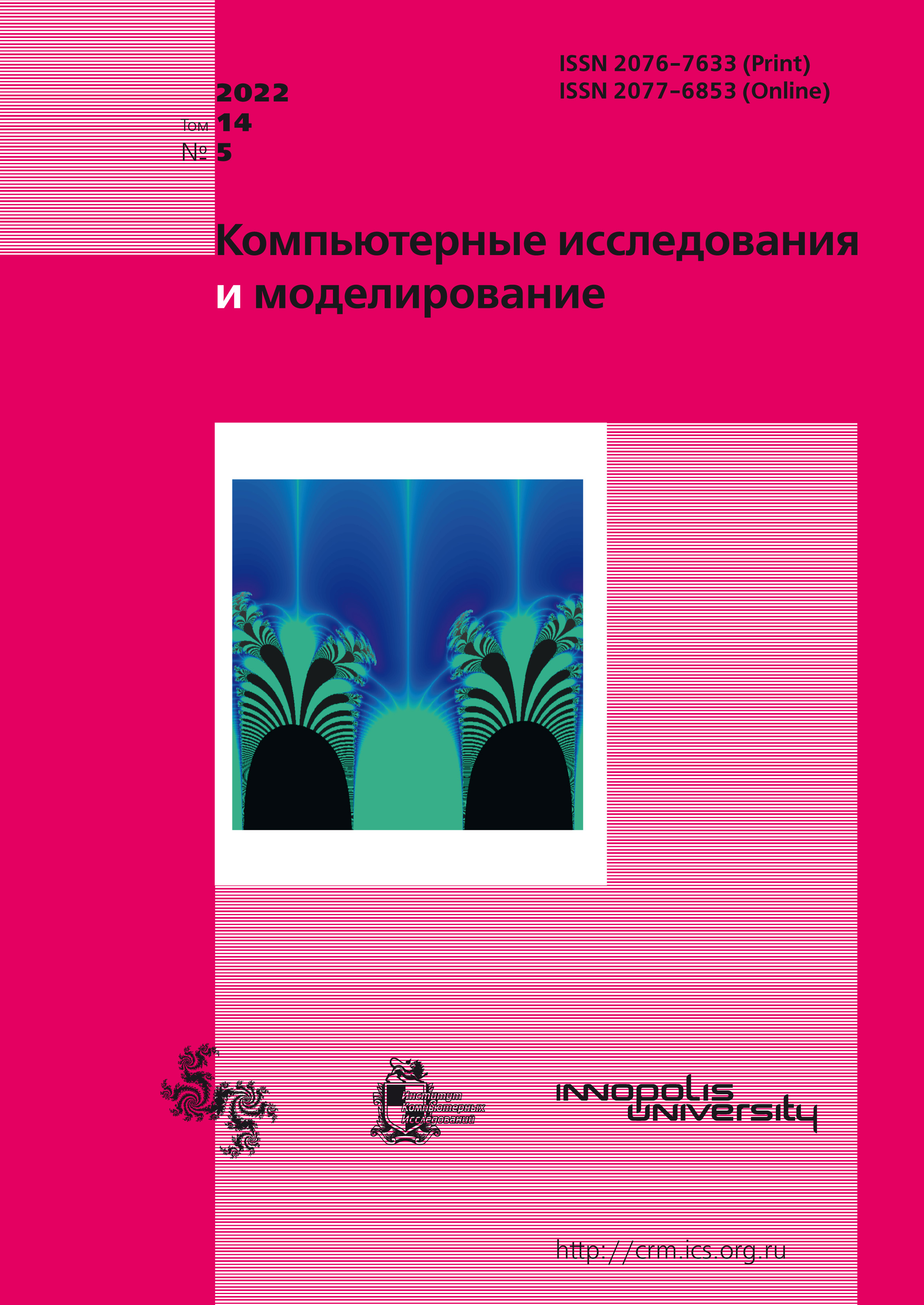All issues
- 2025 Vol. 17
- 2024 Vol. 16
- 2023 Vol. 15
- 2022 Vol. 14
- 2021 Vol. 13
- 2020 Vol. 12
- 2019 Vol. 11
- 2018 Vol. 10
- 2017 Vol. 9
- 2016 Vol. 8
- 2015 Vol. 7
- 2014 Vol. 6
- 2013 Vol. 5
- 2012 Vol. 4
- 2011 Vol. 3
- 2010 Vol. 2
- 2009 Vol. 1
Meshless algorithm for calculating the interaction of large particles with a shock layer in supersonic heterogeneous flows
 pdf (2253K)
pdf (2253K)
The work is devoted to numerical modeling of two-phase flows, namely, the calculation of supersonic flow around a blunt body by a viscous gas flow with an admixture of large high inertia particles. The system of unsteady Navier – Stokes equations is numerically solved by the meshless method. It uses the cloud of points in space to represent the fields of gas parameters. The spatial derivatives of gas parameters and functions are approximated by the least square method to calculate convective and viscous fluxes in the Navier – Stokes system of equations. The convective fluxes are calculated by the HLLC method. The third-order MUSCL reconstruction scheme is used to achieve high order accuracy. The viscous fluxes are calculated by the second order approximation scheme. The streamlined body surface is represented by a model of an isothermal wall. It implements the conditions for the zero velocity and zero pressure gradient, which is also modeled using the least squares method.
Every moving body is surrounded by its own cloud of points belongs to body’s domain and moving along with it in space. The explicit three-sage Runge–Kutta method is used to solve numerically the system of gas dynamics equations in the main coordinate system and local coordinate systems of each particle.
Two methods for the moving objects modeling with reverse impact on the gas flow have been implemented. The first one uses stationary point clouds with fixed neighbors within the same domain. When regions overlap, some nodes of one domain, for example, the boundary nodes of the particle domain, are excluded from the calculation and filled with the values of gas parameters from the nearest nodes of another domain using the least squares approximation of gradients. The internal nodes of the particle domain are used to reconstruct the gas parameters in the overlapped nodes of the main domain. The second method also uses the exclusion of nodes in overlapping areas, but in this case the nodes of another domain take the place of the excluded neighbors to build a single connected cloud of nodes. At the same time, some of the nodes are moving, and some are stationary. Nodes membership to different domains and their relative speed are taken into account when calculating fluxes.
The results of modeling the motion of a particle in a stationary gas and the flow around a stationary particle by an incoming flow at the same relative velocity show good agreement for both presented methods.
Copyright © 2022 Sposobin A.V.
Indexed in Scopus
Full-text version of the journal is also available on the web site of the scientific electronic library eLIBRARY.RU
The journal is included in the Russian Science Citation Index
The journal is included in the RSCI
International Interdisciplinary Conference "Mathematics. Computing. Education"






